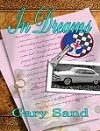The first photo is of a small Hickory tree in our side yard. The core rotted out and a winter storm broke off the top half. It was located in an area where I hadn’t done any landscaping, so my procrastination allowed the tree to stand long enough to be claimed by a pair of Tufted Titmice. They didn’t seem to care that it didn’t have a roof as long as there was a ledge inside where they could build a nest.
Last month, I thought the parents had been killed, or that they had abandoned the tree with baby birds inside. In an earlier post, I mentioned that I found a baby bird that had left the nest too early and perished. I didn’t see the adult birds for some time, but they eventually returned and are now raising a second brood. I’ve been watching them carry food inside the tree for the past three days, so all is well for the time being.
 The second photo shows the home of our newest bird neighbors…a pair of Red bellied Woodpeckers. The tree died last fall and a winter windstorm broke a large branch. To protect a nearby fence, I cut the rest of the rotten branches off, but left about ten feet of good wood standing, intending to give it to a friend for firewood later this year. I didn’t want to cut it down and store it on the ground, as it will rot and be invaded by termites if it touches the soil. Then a few weeks ago, the woodpeckers began chipping an entrance hole near the top, and now have a nesting area almost complete. There are enough chips below the tree to make you think they’ve been using a chain saw.
The second photo shows the home of our newest bird neighbors…a pair of Red bellied Woodpeckers. The tree died last fall and a winter windstorm broke a large branch. To protect a nearby fence, I cut the rest of the rotten branches off, but left about ten feet of good wood standing, intending to give it to a friend for firewood later this year. I didn’t want to cut it down and store it on the ground, as it will rot and be invaded by termites if it touches the soil. Then a few weeks ago, the woodpeckers began chipping an entrance hole near the top, and now have a nesting area almost complete. There are enough chips below the tree to make you think they’ve been using a chain saw. 
I hate to cut down two perfectly good nesting places, so I guess we’ll just have to put up with a couple of ugly stumps for a while.





No comments:
Post a Comment